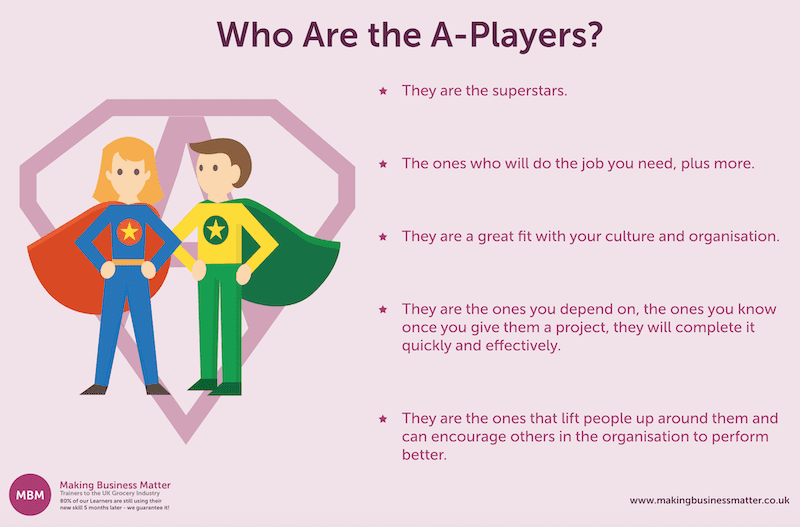Nurturing Tomorrow’s Talent…
It’s a long-told story of learning and development. An organisation needs to make a 20% cut in budgets. The usual first place to stop is the learning and development department. Job losses occur leaving a minimal resource to cover compliance or none at all. The rise in attrition then follows due to lack of development. Employee relations cases increase and general poor morale among the workforce prevails. Common, are the posts on social media pleading the case for learning and development and the short-sightedness of this approach.
How do we reverse this self-fulfilling prophecy ensuring that we develop tomorrow’s talent? From an organisational point of view, where else do we make the cuts? Sales? Finance? Operations? Do we lessen the quality of service or product? No, this is about organisational survival and developing tomorrow’s talent.
This reflection considers the organisational predicament of management development when economic times are hard. Not every organisation has sufficient funds to send managers and leaders on development training programmes. Many SME’s are getting by day by day. Developing the next generation of leaders and managers or considering the learner times doesn’t have to be expensive. It does require thought, planning and some extra effort on behalf of the decision-makers. Even if you do have a healthy budget for development, have you created the best learning opportunities? This is more than talent mapping; it’s about creating a solid foundation of tomorrow’s talent for those tough economic times.
Prevention Rather than Cure
Let’s consider a medical analogy. If clinical professionals only ever look to cure people of their ailments, they will fall into the same self-fulfilling prophecy. As new strains of diseases occur and lifestyle changes bring about other conditions, we need to look at the root cause. Prevention rather than cure. This takes research and a deeper understanding of the cause. The same analogy works for the development of leaders and managers. The requirement is to develop a proactive programme of development that is as enduring as the people attending it.
As with the medical analogy, this takes time and understanding. What are you trying to achieve as an organisation with regard to development? Organisations generally look for longevity. This can be witnessed when three-five year strategies are produced. If we genuinely believe that our people are our greatest asset, then a solid plan of development one key driver. Having that bank of well-trained managers as well as identifying tomorrow’s talent will pay dividends.
More Than Management Development
In 1974, Peter Drucker wrote the book, Management: Tasks, Responsibilities and Practices. Within, Drucker asks us to consider the knowledge worker as the economic force. By this, he means that managers demand a higher level of knowledge than the details on a job description. He means creating a higher level of communication that informs and educates. Within the same book, Drucker explains that management development is not about courses. It is not about taking the manager away from their role for a short period of time. Let’s consider this for a moment, Drucker wrote this 45 years ago. Considering the amount of money spent on manager development alone each year, we have to ask ourselves, was it purposeful? Did the development actually stick? Organisations should be considering longer-term development that engages the manager with the work they perform.
This ‘hit and hope’ strategy can also be seen in recruitment. The type of recruitment that identifies a vacancy, shakes off the old job description and replaces like for like. Even worse, promotes someone without the relevant managerial development because they are good at their current role. Teresa Boughey, in her excellent book ‘Closing the Gap’ calls this the ‘Magic Weekend’. Interviewee’s offered a position on a Friday who magically turn into people managers by Monday. The new manager then spends the next year either struggling, wishing for their old job back or leaving. This is not inclusive recruitment, nor learning on the job as some people might see it, yet it happens daily. Imagine for a moment that the new manager had been prepared properly. Provided with an opportunity to test the waters. This kind of approach provides an impact as the development is meaningful, purposeful and informs.
The Management Development Challenge
When we consider the leaner times, what is required are programmes that can be developed and owned by managers themselves. In good times, this can be run in conjunction with the learning and development team. Introduction to management is a good example. Induction often brings forth visions of a two-week training course in a classroom being visited by various managers from differing departments. It really doesn’t have to be this way.

Manager induction is about investigations, observations and having a plan to inform. Anyone in the induction period is usually enthusiastic and want to make an impact. Why waste this opportunity to maximise this? Very often new managers need to see beyond their own sphere, need to recognise their place and impact in the organisation. My own past saw me sitting in on board, governance and strategic communication meetings. Why? Because it was all relevant each of the decisions made within those meetings impacted me in some way.
The management development challenge was placed in front of me in the best possible way. It embedded me in the workplace, asked me to reflect on what I was witnessing first hand. More than this, it showed the human side of senior management and the face of the organisation. This development cost nothing but a few extra minutes of introductions. When the confidential elements came around, I was politely asked to leave. It is appreciated that you can not have swarms of managers in board meetings. What can happen is a prepared plan for those who are new to management or who are thinking of becoming one. Provide the real picture, ask them to reflect. If they choose to follow this through, prepare occasional shadowing, job swapping or mentoring. Most importantly, they must keep learning, keeping themselves relevant.
Keeping Pace
Proactive employees who understand the fundamentals of business are hugely valuable. If their intention is to move into management positions, then there is a responsibility to enable this. The responsibility is not all yours however, they should be keeping pace with their learning. Consider the site you are reading this reflection on. There are lots of free resources to utilise. When your managers have used these purposefully, you may then want to follow this up with formal learning.
Owning your own development then utilising it is a solid and proven way to make development and learning stick. Organisations require us to be forward-thinking hence why we see three-five year plans. There is no ‘right time’ to begin the foundations of solid managerial and talent development. Be mindful of those external threats coming from competitors, technology and our own economy and plan accordingly.
The Fight for Tomorrow’s Talent
Talent mapping, talent management, talent maintenance, all mean the same thing. What are you doing to enhance the knowledge and skills of your people? How are you going to keep employees who show a capacity for more?

Pick up any business or human resource periodical and there will usually be an article on ‘the fight for talent’. Many of these will paint a dramatic picture of the failures to keep your best people and what to do. Many will suggest a ‘9-box grid’ approach. All good stuff and I would advocate this. Consider your position, do you have the right people with the right skills now and a plan for the future? If the worse was to happen, have you identified a number of suitable people who could step up? Do you have key people approaching retirement? Buying your way out of that situation is short-sighted and dangerous.
Creative Development
Buying in talent is fraught with pitfalls. You may not find anyone, recruitment is costly and timely, they may not be an organisational fit. Not to mention the amount of time required to get to know the organisation. It is at times like these where creative development comes into play. You may not have the money for expensive formal courses, however, are you paying the apprenticeship levy? What about the great people who have possibly retired? Asking them to come back is termed as ‘returnship’. These individuals may have left work due to illness, retirement or a career break. The option to re-join on a reduced contract may be a possibility. Moreover, could they mentor others? This type of creativity may aid in developing a wider group of new managers moving through.
While there may be a cost to sending ‘returners’ on mentoring and coaching development, consider the wider benefits. This type of approach works when then times are good and there are sufficient funds available. Those individuals who are now at least management ready can take on challenges when they come.
Now introduce the 70/20/10 approach of learning to these people. Where these newly developed employees go and learn back in the workplace (the 70%) because they see the wider picture. They could even be talented enough to run the 20%, coaching and action learning for example. This leaves the learning team to manage the 10%, the formal learning. Creative development takes many forms, many of which are way beyond formal development. In many ways, much more purposeful.
Talent Spotting – Building for Tomorrow
Many organisations utilise the personal development plan to attain knowledge of skill development. This usually takes place as a formal chat reviewing performance understanding where development may be useful. They should also consider the aspirations of individuals. Good managers prepare diligently. Great managers are constantly looking for potential. They scan the whole organisation; they are purposeful in their talent spotting, constantly building for tomorrow. The greatest managers can do this with people not in their teams, it may be through cross-functional meetings or communications. These managers open their vision from micro to macro, because the survival of the organisation and its people matter. They will not always get it right, but how can a conversation hurt? Reflect on the last time you were truly impressed with someone you interacted with. What did you do with that information?

How many of these excellent individuals are missed? They are missed because excellence happens all the time. Holding a development discussion once a month is only one opportunity to look for talented individuals. These kinds of meetings are ‘on stage’, we prepare for a conversation with our managers and therefore have a certain mask or behaviour. Great managers see beyond this and look at the ‘off-stage’ too; when employees are working in a normal capacity. Imagine how individuals feel when you recognise something they did outside of the norm. Imagine the pride that they have when you spot excellence in their work when they were not aware you were looking. Focussing on outcomes is fine, there is so much more that is missed when we do this.
Final Thoughts on Tomorrow’s Talent
At the time of writing this reflection, we are on the cusp of leaving the EU. These are uncertain times for the UK that could have huge economic impacts on all businesses. While exporters consider levy’s, accountants consider balance sheets, CEOs and directors need to consider their workforce for all the challenges to come. What do you want your managers to be like in the next five years? Do you know who they are? Is there a plan to replace key people when they ultimately leave? Developing tomorrows talent is as important to the organisation as finance, sales or operations. This is about developing a legacy. Moving beyond the normal to create a bank of talent that produces more than outcomes.
These individuals will need purposeful development that enhances their skills and talent in order for them to lead tomorrow.




